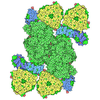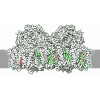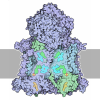+ Open data
Open data
- Basic information
Basic information
| Entry | Database: PDB / ID: 9mgz | ||||||
|---|---|---|---|---|---|---|---|
| Title | Dunaliella tertiolecta PSI-LHCI-TIDI1 supercomplex | ||||||
 Components Components |
| ||||||
 Keywords Keywords | PHOTOSYNTHESIS / iron homeostasis / membrane protein / photosystem I / Dunaliella / green alga / PSI-LHCI supercomplex / TIDI / thylakoid iron-deficiency induced protein / photosynthetic apparatus / eukaryotes / Dunaliella tertiolecta | ||||||
| Function / homology |  Function and homology information Function and homology informationBETA-CAROTENE / CHLOROPHYLL B / CHLOROPHYLL A ISOMER / CHLOROPHYLL A / DIGALACTOSYL DIACYL GLYCEROL (DGDG) / 1,2-DIPALMITOYL-PHOSPHATIDYL-GLYCEROLE / 1,2-DISTEAROYL-MONOGALACTOSYL-DIGLYCERIDE / Chem-LMK / Chem-LUT / PHYLLOQUINONE ...BETA-CAROTENE / CHLOROPHYLL B / CHLOROPHYLL A ISOMER / CHLOROPHYLL A / DIGALACTOSYL DIACYL GLYCEROL (DGDG) / 1,2-DIPALMITOYL-PHOSPHATIDYL-GLYCEROLE / 1,2-DISTEAROYL-MONOGALACTOSYL-DIGLYCERIDE / Chem-LMK / Chem-LUT / PHYLLOQUINONE / PHOSPHATIDYLETHANOLAMINE / IRON/SULFUR CLUSTER / Chem-SQD / Chem-XAT Similarity search - Component | ||||||
| Biological species |  Dunaliella tertiolecta (plant) Dunaliella tertiolecta (plant) | ||||||
| Method | ELECTRON MICROSCOPY / single particle reconstruction / cryo EM / Resolution: 2.8 Å | ||||||
 Authors Authors | Liu, H.W. / Khera, R. / Iwai, M. / Merchant, S.S. | ||||||
| Funding support |  United States, 1items United States, 1items
| ||||||
 Citation Citation |  Journal: Proc Natl Acad Sci U S A / Year: 2025 Journal: Proc Natl Acad Sci U S A / Year: 2025Title: A distinct LHCI arrangement is recruited to photosystem I in Fe-starved green algae. Authors: Helen W Liu / Radhika Khera / Patricia Grob / Sean D Gallaher / Samuel O Purvine / Carrie D Nicora / Mary S Lipton / Krishna K Niyogi / Eva Nogales / Masakazu Iwai / Sabeeha S Merchant /  Abstract: Iron (Fe) availability limits photosynthesis at a global scale where Fe-rich photosystem (PS) I abundance is drastically reduced in Fe-poor environments. We used single-particle cryoelectron ...Iron (Fe) availability limits photosynthesis at a global scale where Fe-rich photosystem (PS) I abundance is drastically reduced in Fe-poor environments. We used single-particle cryoelectron microscopy to reveal a unique Fe starvation-dependent arrangement of light-harvesting chlorophyll (LHC) proteins where Fe starvation-induced TIDI1 is found in an additional tetramer of LHC proteins associated with PSI in and . These cosmopolitan green algae are resilient to poor Fe nutrition. TIDI1 is a distinct LHC protein that co-occurs in diverse algae with flavodoxin (an Fe-independent replacement for the Fe-containing ferredoxin). The antenna expansion in eukaryotic algae we describe here is reminiscent of the iron-starvation induced (encoding) antenna ring in cyanobacteria, which typically co-occurs with , encoding flavodoxin. Our work showcases the convergent strategies that evolved after the Great Oxidation Event to maintain PSI capacity. | ||||||
| History |
|
- Structure visualization
Structure visualization
| Structure viewer | Molecule:  Molmil Molmil Jmol/JSmol Jmol/JSmol |
|---|
- Downloads & links
Downloads & links
- Download
Download
| PDBx/mmCIF format |  9mgz.cif.gz 9mgz.cif.gz | 1.1 MB | Display |  PDBx/mmCIF format PDBx/mmCIF format |
|---|---|---|---|---|
| PDB format |  pdb9mgz.ent.gz pdb9mgz.ent.gz | 980.3 KB | Display |  PDB format PDB format |
| PDBx/mmJSON format |  9mgz.json.gz 9mgz.json.gz | Tree view |  PDBx/mmJSON format PDBx/mmJSON format | |
| Others |  Other downloads Other downloads |
-Validation report
| Summary document |  9mgz_validation.pdf.gz 9mgz_validation.pdf.gz | 14.1 MB | Display |  wwPDB validaton report wwPDB validaton report |
|---|---|---|---|---|
| Full document |  9mgz_full_validation.pdf.gz 9mgz_full_validation.pdf.gz | 14.5 MB | Display | |
| Data in XML |  9mgz_validation.xml.gz 9mgz_validation.xml.gz | 208 KB | Display | |
| Data in CIF |  9mgz_validation.cif.gz 9mgz_validation.cif.gz | 267.7 KB | Display | |
| Arichive directory |  https://data.pdbj.org/pub/pdb/validation_reports/mg/9mgz https://data.pdbj.org/pub/pdb/validation_reports/mg/9mgz ftp://data.pdbj.org/pub/pdb/validation_reports/mg/9mgz ftp://data.pdbj.org/pub/pdb/validation_reports/mg/9mgz | HTTPS FTP |
-Related structure data
| Related structure data |  48264MC  9mgwC  9mh0C  9mh1C C: citing same article ( M: map data used to model this data |
|---|---|
| Similar structure data | Similarity search - Function & homology  F&H Search F&H Search |
- Links
Links
- Assembly
Assembly
| Deposited unit | 
|
|---|---|
| 1 |
|
- Components
Components
-Chlorophyll a-b binding protein, ... , 3 types, 6 molecules 1a7c8b
| #1: Protein | Mass: 24763.281 Da / Num. of mol.: 2 / Source method: isolated from a natural source / Source: (natural)  Dunaliella tertiolecta (plant) Dunaliella tertiolecta (plant)#3: Protein | Mass: 27611.418 Da / Num. of mol.: 2 / Source method: isolated from a natural source / Source: (natural)  Dunaliella tertiolecta (plant) Dunaliella tertiolecta (plant)#4: Protein | Mass: 27475.346 Da / Num. of mol.: 2 / Source method: isolated from a natural source / Source: (natural)  Dunaliella tertiolecta (plant) Dunaliella tertiolecta (plant) |
|---|
-Protein , 6 types, 6 molecules 3CFKTL
| #2: Protein | Mass: 30707.969 Da / Num. of mol.: 1 / Source method: isolated from a natural source / Source: (natural)  Dunaliella tertiolecta (plant) Dunaliella tertiolecta (plant) |
|---|---|
| #7: Protein | Mass: 8848.286 Da / Num. of mol.: 1 / Source method: isolated from a natural source / Source: (natural)  Dunaliella tertiolecta (plant) / References: photosystem I Dunaliella tertiolecta (plant) / References: photosystem I |
| #10: Protein | Mass: 24645.479 Da / Num. of mol.: 1 / Source method: isolated from a natural source / Source: (natural)  Dunaliella tertiolecta (plant) Dunaliella tertiolecta (plant) |
| #12: Protein | Mass: 12429.592 Da / Num. of mol.: 1 / Source method: isolated from a natural source / Source: (natural)  Dunaliella tertiolecta (plant) Dunaliella tertiolecta (plant) |
| #13: Protein | Mass: 38121.188 Da / Num. of mol.: 1 / Source method: isolated from a natural source / Source: (natural)  Dunaliella tertiolecta (plant) Dunaliella tertiolecta (plant) |
| #14: Protein | Mass: 20694.154 Da / Num. of mol.: 1 / Source method: isolated from a natural source / Source: (natural)  Dunaliella tertiolecta (plant) Dunaliella tertiolecta (plant) |
-Photosystem I P700 chlorophyll a apoprotein ... , 2 types, 2 molecules AB
| #5: Protein | Mass: 83109.773 Da / Num. of mol.: 1 / Source method: isolated from a natural source / Source: (natural)  Dunaliella tertiolecta (plant) / References: photosystem I Dunaliella tertiolecta (plant) / References: photosystem I |
|---|---|
| #6: Protein | Mass: 81895.672 Da / Num. of mol.: 1 / Source method: isolated from a natural source / Source: (natural)  Dunaliella tertiolecta (plant) / References: photosystem I Dunaliella tertiolecta (plant) / References: photosystem I |
-Photosystem I reaction center subunit ... , 4 types, 4 molecules DEJI
| #8: Protein | Mass: 21171.371 Da / Num. of mol.: 1 / Source method: isolated from a natural source / Source: (natural)  Dunaliella tertiolecta (plant) Dunaliella tertiolecta (plant) |
|---|---|
| #9: Protein | Mass: 12209.986 Da / Num. of mol.: 1 / Source method: isolated from a natural source / Source: (natural)  Dunaliella tertiolecta (plant) Dunaliella tertiolecta (plant) |
| #11: Protein/peptide | Mass: 4614.362 Da / Num. of mol.: 1 / Source method: isolated from a natural source / Source: (natural)  Dunaliella tertiolecta (plant) Dunaliella tertiolecta (plant) |
| #15: Protein | Mass: 11031.127 Da / Num. of mol.: 1 / Source method: isolated from a natural source / Source: (natural)  Dunaliella tertiolecta (plant) Dunaliella tertiolecta (plant) |
-Sugars , 2 types, 5 molecules 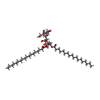
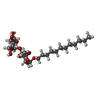

| #23: Sugar | | #25: Sugar | |
|---|
-Non-polymers , 13 types, 279 molecules 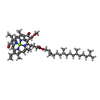
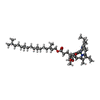
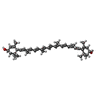
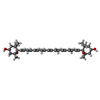
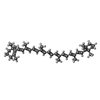
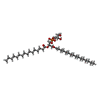
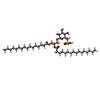
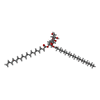
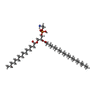
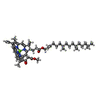
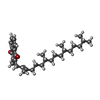
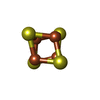













| #16: Chemical | ChemComp-CHL / #17: Chemical | ChemComp-CLA / #18: Chemical | ChemComp-LUT / ( #19: Chemical | ChemComp-XAT / ( #20: Chemical | ChemComp-BCR / #21: Chemical | ChemComp-LHG / #22: Chemical | ChemComp-SQD / | #24: Chemical | #26: Chemical | ChemComp-PTY / #27: Chemical | ChemComp-CL0 / | #28: Chemical | #29: Chemical | #30: Chemical | ChemComp-LMK / | |
|---|
-Details
| Has ligand of interest | Y |
|---|---|
| Has protein modification | N |
| Sequence details | Sequences not on Uniprot but can be found in the genome accession number GSE222140 on NCBI Gene ...Sequences not on Uniprot but can be found in the genome accession number GSE222140 on NCBI Gene Expression Omnibus (GEO) |
-Experimental details
-Experiment
| Experiment | Method: ELECTRON MICROSCOPY |
|---|---|
| EM experiment | Aggregation state: PARTICLE / 3D reconstruction method: single particle reconstruction |
- Sample preparation
Sample preparation
| Component | Name: Dunaliella salina PSI-LHCI-TIDI1 supercomplex / Type: COMPLEX / Entity ID: #1-#14 / Source: NATURAL |
|---|---|
| Source (natural) | Organism:  Dunaliella salina (plant) Dunaliella salina (plant) |
| Buffer solution | pH: 6.5 |
| Specimen | Embedding applied: NO / Shadowing applied: NO / Staining applied: NO / Vitrification applied: YES |
| Specimen support | Grid material: GOLD / Grid mesh size: 300 divisions/in. / Grid type: Quantifoil R1.2/1.3 |
| Vitrification | Instrument: FEI VITROBOT MARK IV / Cryogen name: ETHANE / Humidity: 100 % / Chamber temperature: 283.15 K |
- Electron microscopy imaging
Electron microscopy imaging
| Experimental equipment |  Model: Titan Krios / Image courtesy: FEI Company |
|---|---|
| Microscopy | Model: TFS KRIOS |
| Electron gun | Electron source:  FIELD EMISSION GUN / Accelerating voltage: 300 kV / Illumination mode: OTHER FIELD EMISSION GUN / Accelerating voltage: 300 kV / Illumination mode: OTHER |
| Electron lens | Mode: BRIGHT FIELD / Nominal magnification: 81000 X / Nominal defocus max: 2100 nm / Nominal defocus min: 900 nm / Cs: 2.7 mm / Alignment procedure: COMA FREE |
| Specimen holder | Cryogen: NITROGEN / Specimen holder model: FEI TITAN KRIOS AUTOGRID HOLDER |
| Image recording | Electron dose: 60 e/Å2 / Film or detector model: GATAN K3 (6k x 4k) / Num. of grids imaged: 1 / Num. of real images: 11529 |
- Processing
Processing
| EM software |
| ||||||||||||||||||||||||||||||||||||||||
|---|---|---|---|---|---|---|---|---|---|---|---|---|---|---|---|---|---|---|---|---|---|---|---|---|---|---|---|---|---|---|---|---|---|---|---|---|---|---|---|---|---|
| CTF correction | Type: PHASE FLIPPING AND AMPLITUDE CORRECTION | ||||||||||||||||||||||||||||||||||||||||
| Particle selection | Num. of particles selected: 1601273 | ||||||||||||||||||||||||||||||||||||||||
| 3D reconstruction | Resolution: 2.8 Å / Resolution method: FSC 0.143 CUT-OFF / Num. of particles: 217073 / Num. of class averages: 1 / Symmetry type: POINT | ||||||||||||||||||||||||||||||||||||||||
| Atomic model building | Protocol: AB INITIO MODEL | ||||||||||||||||||||||||||||||||||||||||
| Atomic model building | PDB-ID: 6SL5 Accession code: 6SL5 / Source name: PDB / Type: experimental model |
 Movie
Movie Controller
Controller






 PDBj
PDBj